How does the Indesit washing machine drum work?
 The washing drum itself in Indesit machines is practically no different from similar parts of other washing machines. It looks like a movable cylindrical tank with holes and ribs on the walls, is made of metal and is used to load laundry into the machine. But more often, the structure of the drum of the Indesit washing machine means not only the cylinder. This includes the entire drum assembly, including the tank, cuff, shaft and many other parts of the washing machine. Let's talk about each of them further.
The washing drum itself in Indesit machines is practically no different from similar parts of other washing machines. It looks like a movable cylindrical tank with holes and ribs on the walls, is made of metal and is used to load laundry into the machine. But more often, the structure of the drum of the Indesit washing machine means not only the cylinder. This includes the entire drum assembly, including the tank, cuff, shaft and many other parts of the washing machine. Let's talk about each of them further.
Tank-drum assembly design
The drum is the central place in a washing machine, and most parts of the machine interact with it in one way or another. Let us repeat once again that it is designed simply and is a cylindrical container made of stainless steel. The user puts dirty things into it through the main hole, and then water enters the tank through special “holes”. In this case, the liquid does not escape further - the tightly closed door and rubber cuff provide the necessary tightness.
The drum is located in a tank - a large plastic container, light and durable. In its upper part there is a hole for the hose from the dispensary, through which water with powder gets to the things, and from below there is a pipe for subsequent drainage of the waste liquid. The pressure switch tube is also located here. The tank-drum assembly is connected from behind, through a screwed-on metal cross with a bushing and bearings. The structure is further complemented by a shaft driven by a pulley and a drive belt.
The drum is suspended in a plastic tank and rotates due to the crosspiece and shaft.
If the drum is “held” by a cross, then the tank is fixed in the machine due to the shock-absorbing system: springs, shock absorbers and dampers. Due to centrifugal force, the container is not fixed rigidly, but securely. A concrete counterweight is also required, which compensates for the vibration emanating during washing.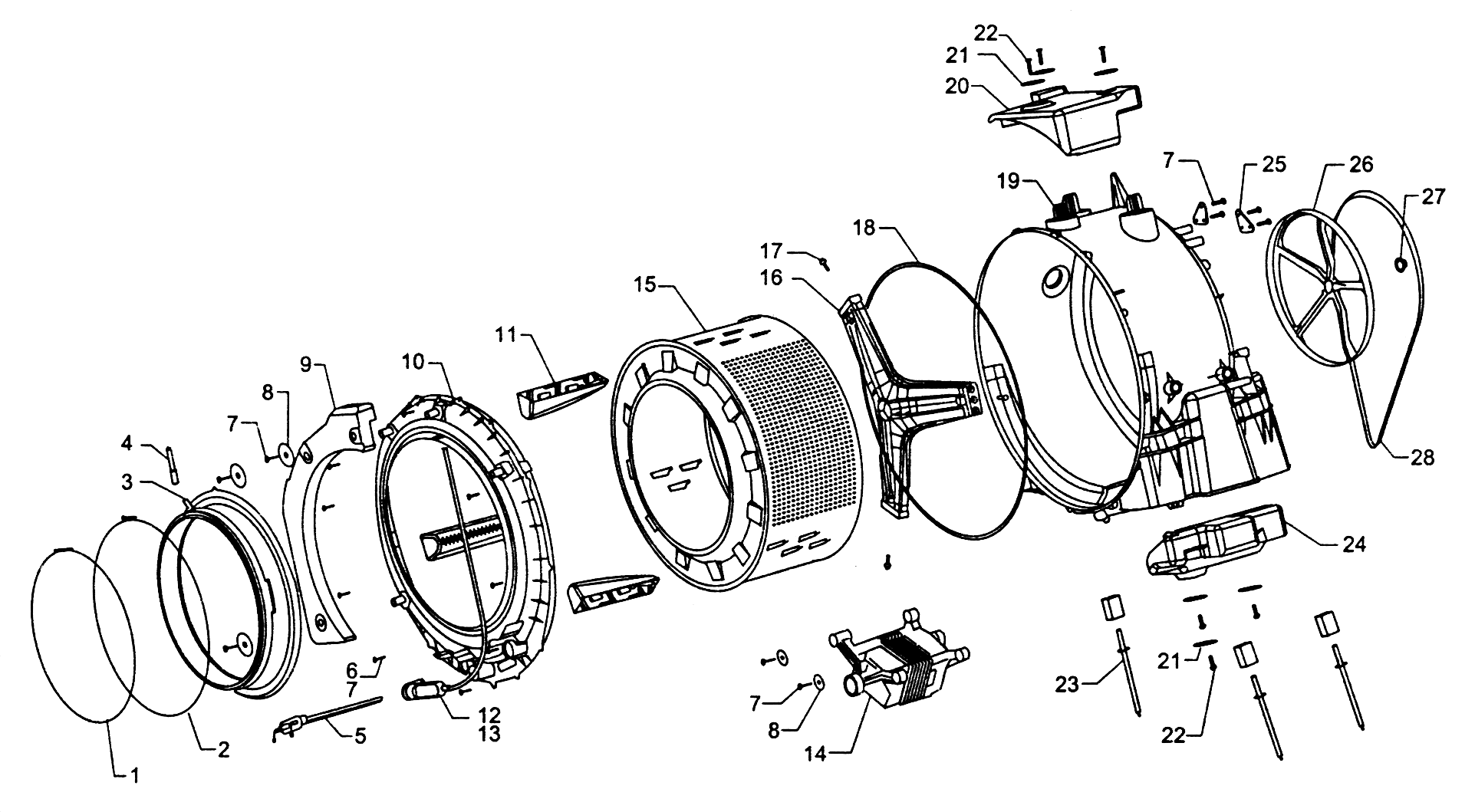
Next to the drum, in the back of the tank, there is also a hole for placing the heating element. The heater is fixed with bolts with the contacts facing outward and heats the water to the set temperature. A special sensor helps with the latter - a thermistor, which transmits data on the degree of heating to the control board. The liquid itself does not get onto the contacts of the heating element, since the space around it is reliably sealed with rubber gaskets.
At the bottom of the tank there is a commutator type motor. It is he who accelerates the drum, transmitting the accumulated speed from the bushing to the pulley through the drive belt. The speed of the motor is controlled by a special sensor - a tachogenerator.
Parts adjacent to the tank
But the average user does not need to know what a drum looks like in cross-section. It is much more important to understand the relationship between the main washing tank and the other parts of the machine and the purpose of the latter. In short, the cylinder directly interacts with the following elements:
- Dispenser. In simple words - a powder receptacle into which detergent is poured. As a rule, there are three compartments in the tray: for the main wash, pre-wash and conditioner. There is a “box” in the bunker where the pipes from the filling pipe are supplied. The incoming water is saturated with powder or gel and sent through hoses into the drum.
The purpose of the dispenser compartment is determined by the printed image: the container for the conditioner is marked with an “asterisk”, the number “I” is the main wash, and “II” is the preliminary wash.
- Cuff. This is a rubber seal located on the hatch and is necessary to ensure a seal inside the machine. There are two rubber bands: one is attached to the body, and the second is attached to the tank.
- Hoses and pipes. Everything is simple here, since water flows from the water supply through the top drum into the drum, which, passing through the dispensary, is mixed with detergent. At the bottom, the waste liquid goes into the drain through a special hose directly into the sewer.
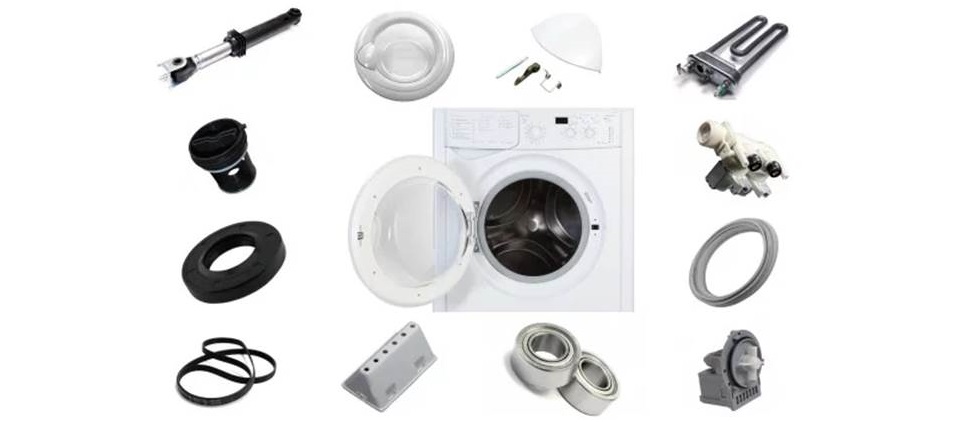
- Water pump. The water drained through the lower pipe enters the pump, which pumps out the dirty liquid from the drum. The drainage design is standard: there is a motor inside, an impeller in front, and a snail and drain hose on top. But there is a high probability of clogging, since all foreign objects that get into the washer, hair, coins, bra wires, reach the pump and cause clogging.
To avoid blockages, carefully check the pockets before loading items into the drum, or better yet, use special protective bags.
- UBL. It stands for hatch locking device and is an electronic lock. Complements the mechanical door locking, automatically activating after starting the washing program.
- Filling valve. It consists of 1-3 coils, which open the hose under electrical voltage, ensuring the flow of water into the machine. As soon as a sufficient amount is collected, the membrane closes and the recruitment stops.
- Pressostat. The sensor consists of a plastic box and a long tube that goes deep into the machine. The device controls the pressure in the tank, measuring the level of collected water. If the set point is reached, the pressure switch sends a corresponding signal to the control board and the water intake stops.
- Network filter. Ensures the safe operation of the machine, protecting internal elements and electronics from voltage surges in the network. The device suppresses pulse and high-frequency interference, which reduces the likelihood of overheating and short circuits.
- Control module. The “brains” of the Indesit washing machine, which, using triacs and resistors, control all the parts of the machine. The board issues commands, controls their execution, and in the event of a breakdown or malfunction, automatically stops the cycle.
If the control board fails, the machine does not turn on and does not respond to user commands.
The washing drum is part of a well-coordinated mechanism. Almost every part of the machine, in one way or another, interacts with the drum tank, ensuring safe and high-quality washing.
Interesting:
Reader comments
- Share your opinion - leave a comment
Categories
Washing machine repair


For buyers

For users

Dishwasher

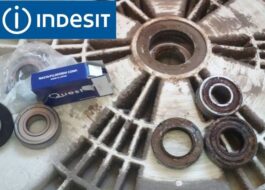

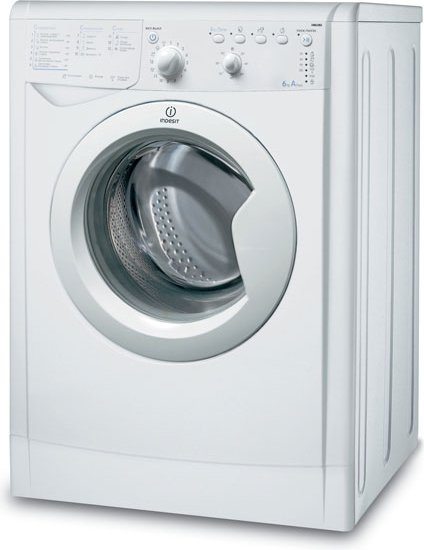
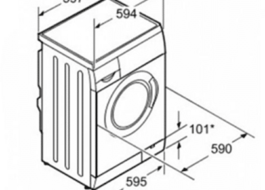












Add a comment